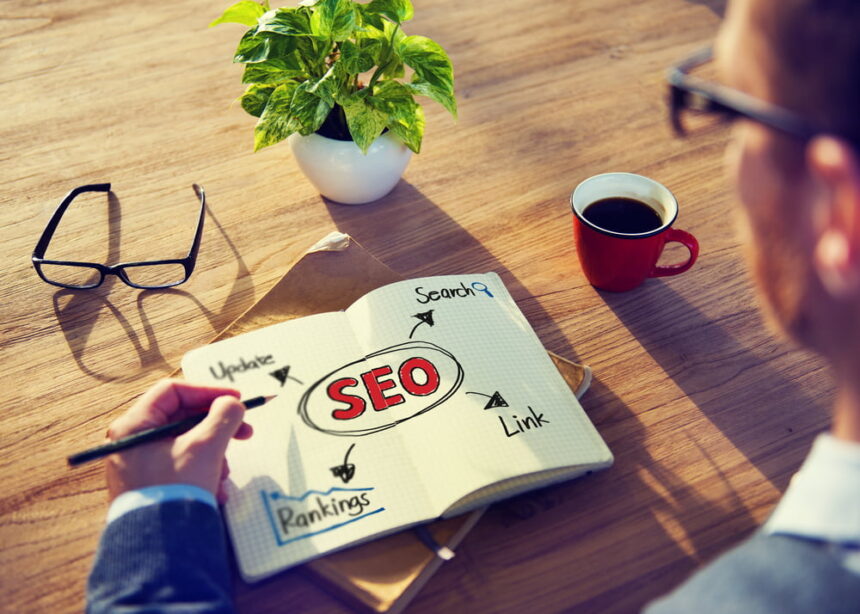Data analytics technology has become a very important element of modern marketing. One of the ways that big data is transforming marketing is through SEO.
We have previously talked about data-driven SEO. However, we feel that it is time to have a more nuanced discussion about using big data in SEO. You may want to leverage data analytics to improve the SEO of your images.
Data Analytics is Key to Improving the SEO of Your Images
Images are a big part of the internet, and they can also impact how well your website does in search engine results. Like any other kind of content, images can help or hurt your SEO. This means that pictures and other types of creative content can greatly affect how well search engines rank your website.
In this article, we will talk about how images relate to SEO and how to make sure they are working for you. We will later delve into some ways that you can use data analytics to improve the SEO of your images.
What Is Image SEO?
Image SEO is optimizing the images on your website for search engines. This means making it easy for search engines to understand and find your pictures, which can help your website rank higher in Google and other search engines.
Even though it’s often overlooked, Image SEO is important. If you don’t pay attention, your website may have trouble getting links, appearing in search results, and getting visitors.
5 Ways to Use Data Analytics to Improve SEO and Conversion Rates of Images
The good news is that you can greatly improve your image SEO by using big dat. Here are a few simple tips to get started.
1. Only Use Relevant, High-Quality Images
Images are also crucial for website design since they can quickly convey information. Research shows that our brains can process images in just 13 milliseconds. This means that using high-resolution images cannot only make your website look better, but it’s crucial in helping visitors understand and decide about your products more easily.
Improve the overall look of your website by using high-resolution images. You can use image upscaler, a tool that can significantly improve the overall quality of images on a website by increasing their resolution.
It makes the images appear sharper and more vibrant to website visitors, creating a more favorable impression of your site and its content.
You can use data analytics to conduct split-tests to determine which images boost engagement. You may also find AI tools that recommend images that are best for your content.
2. Use Appropriate File Formats
Even though most internet browsers and devices can handle different image formats, it’s important to use the right ones for both usability and SEO. Using the wrong formats can make the images bigger and slow down your website.
The four main image formats for websites are JPG, PNG, GIF, and SVG. Each is best for certain situations because they provide the highest quality while keeping the image small.
- JPG format is perfect for real-life photos.
- PNG format is ideal for digital graphics or illustrations.
- GIF format is used for animated images, such as showing a graph change over time.
- SVG format is great for vector graphics. This format is best for design elements on the website, like logos.
Analytics technology will help you assess the impact that different file formats will have on website load times and performance. You may want to try using big data tools like Pingdom to test these factors.
3. Optimize Image File Sizes
Improperly sized images can greatly slow down the loading time of a webpage. Since image SEO and page speed are closely related, it’s important to compress images properly to optimize them for search engines.
According to Squarespace, the best image size for full-width background images used in banners or the main section of a website is between 1500px and 2500px.
While using large images may seem like a good idea to show off the quality, it’s unnecessary to go above 1500-2000 pixels.
4. Craft Your Alt Text for a Human Audience
Alt text is important because they give Google more information about the image. Alt text also called alternative text or alt tag, is a description added to an image using HTML. This description is displayed if the image can’t be shown.
When describing your images with alt text, it’s important to be specific but not too long. A good way to think about it is to imagine you’re explaining the image to someone over the phone.
Try to use around 125 characters or less. This is because some tools that help people who can’t see well, called screen readers, will stop reading after that many characters.
It’s also a good idea to include keywords related to the image, but be careful not to overuse them, or it will look spammy.
You can use data mining tools like Accessibilityscripts.com and SEOptimer to find the alt tags of competitors. This can help you figure out which meta data is already working well.
5. Place Your Images Near Relevant Text
Google can more easily identify the image’s content by looking at the text near it. To improve the image’s visibility, place it close to relevant text and on pages related to the image’s subject.
Also, having images near relevant text helps to improve the readability of the content, as it helps to break up long blocks of text. This makes it easier for people to read and increases the chances that they will stay on the page to read the content.
Data Analytics Technology is Important for Improving SEO
Optimizing web graphics for SEO is a great way to ensure your site is as visible as possible in search engine results. Fortunately, data analytics can help.
First impressions matter with the current online landscape, so using an image upscaler can help ensure that your website’s visuals are top-notch and world-class. This can help put your best foot forward in creating a professional and polished look for your website.
To recap, here are some image SEO strategies that use data analytics to ensure your site stands out from the crowd and generates more organic traffic:
- Select images that are relevant and high-quality.
- Choose file formats that are suitable for the web.
- Reduce the file size of images for faster loading times.
- Write alt text that accurately describes the image for accessibility.
- Position images close to related text for better context and understanding.
This is one of the best ways to develop a data-driven marketing strategy.











